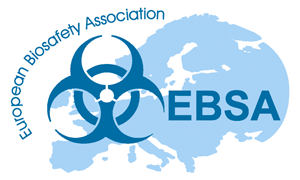About Microbiological Risk Assessment: Should we use the Biosafety Cabinet?
Microbiological Risk Assessment: Should we use the Biosafety Cabinet?
Organised by Dr. Felix Gmünder (Basler & Hofmann) and Fabio Blaha (German LabConCert GmbH)
In diagnostic and research laboratories, it is often the question, whether for activities with potentially pathogenic microorganisms the biosafety cabinet (BSC) should be used. The decision is risk-based. In 2020, WHO published the 4th edition of its Laboratory Biosafety Manual and associated Monographs. In previous editions of the WHO Manual, risk control in the laboratory was based on the fairly rigid system of four risk groups for microorganisms, and four laboratory safety levels. Activity-related hazards of the pathogen and human factors were rather neglected. Already under the previous system, a decision must be made in each case in a BSL-2 laboratory as to which activities must be carried out in a BSC.
WHOs risk-based reboot of its manual builds on a flexible system that focuses more on human factors and lab worker competences and skills, in particular in laboratories dealing with low to medium risks. Flexibility means that the selection of safety measures is risk-based and gets optimised by factoring in the local regulatory requirements, the laboratorys financial and technical resources as well as staff competencies, skills, and training opportunities.
This webinar uses a practical example (enrichment and isolation of EHEC/STEC) to discuss the optimal safety measures for (a) a laboratory with good financial resources and (b) for a laboratory with limited financial means. The focus is on whether use of the biosafety cabinet is mandatory or, whether and under what circumstances, working on a laboratory bench is safe enough.
In part 1, the participants get introduced into the group exercise and, to get started, a few sources of information are given.
Group exercises take place between part 1 and part 2.
In part 2, after 2 weeks, groups report about their results. After discussion in the plenary, the findings are summarised.
Certificate of attendance will be issued upon request.
Schedule:
- 28.04.2021, 10:00-11:00 a.m. (UTC+2): Introduction to Group Exercise (app. 45 min)
- 07.05.2021, 10:00-12:00 a.m. (UTC+2): Group Exercise (Group A) (app. 120 min)
- 07.05.2021, 02:00-04:00 p.m. (UTC+2): Group Exercise (Group B) (app. 120 min)
- 14.05.2021, 10:00-11:30 a.m. (UTC+2): Groups Report Results, Plenary Discussion and Conclusions (app. 90 min)
All information on how to register can be found at https://www.labconcert-webinare.de/w/390362.
